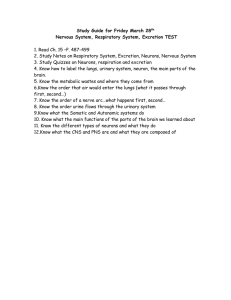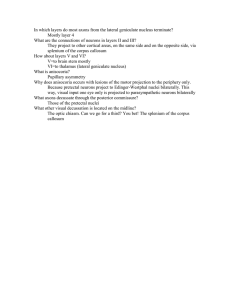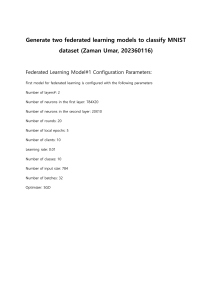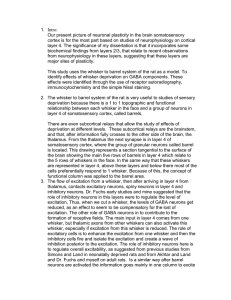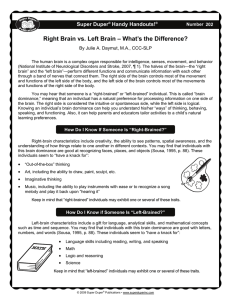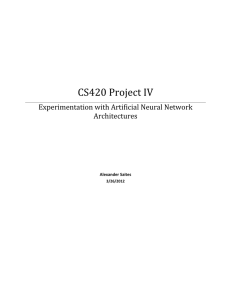Anatomy & Physiology Semester 2
advertisement
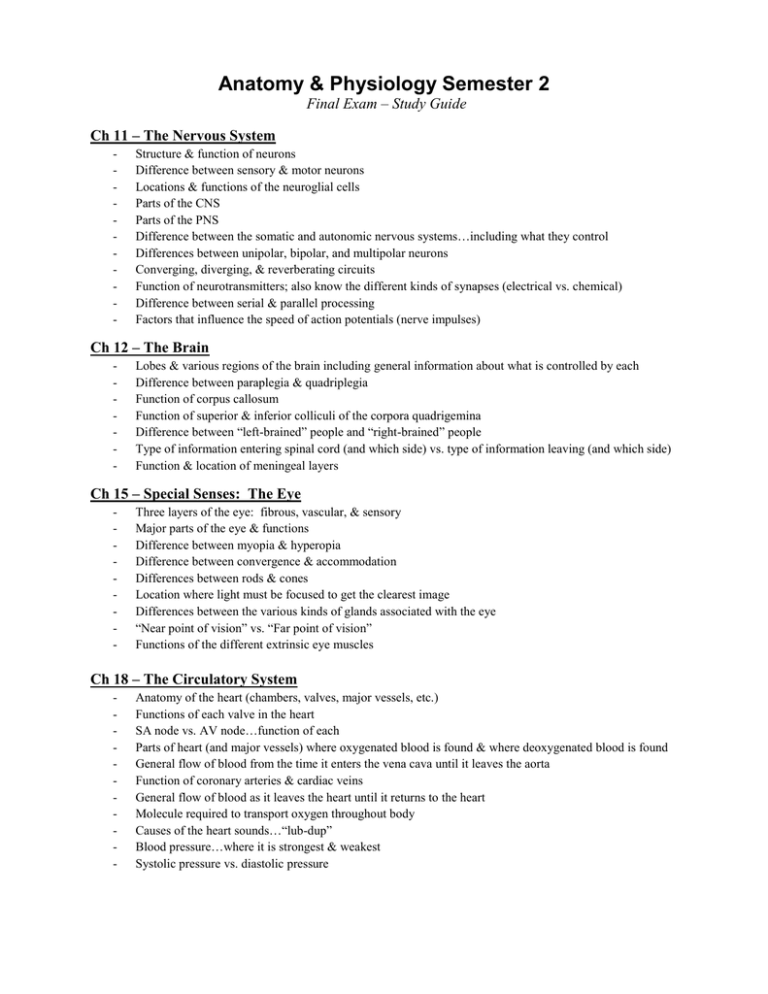
Anatomy & Physiology Semester 2 Final Exam – Study Guide Ch 11 – The Nervous System - Structure & function of neurons Difference between sensory & motor neurons Locations & functions of the neuroglial cells Parts of the CNS Parts of the PNS Difference between the somatic and autonomic nervous systems…including what they control Differences between unipolar, bipolar, and multipolar neurons Converging, diverging, & reverberating circuits Function of neurotransmitters; also know the different kinds of synapses (electrical vs. chemical) Difference between serial & parallel processing Factors that influence the speed of action potentials (nerve impulses) Ch 12 – The Brain - Lobes & various regions of the brain including general information about what is controlled by each Difference between paraplegia & quadriplegia Function of corpus callosum Function of superior & inferior colliculi of the corpora quadrigemina Difference between “left-brained” people and “right-brained” people Type of information entering spinal cord (and which side) vs. type of information leaving (and which side) Function & location of meningeal layers Ch 15 – Special Senses: The Eye - Three layers of the eye: fibrous, vascular, & sensory Major parts of the eye & functions Difference between myopia & hyperopia Difference between convergence & accommodation Differences between rods & cones Location where light must be focused to get the clearest image Differences between the various kinds of glands associated with the eye “Near point of vision” vs. “Far point of vision” Functions of the different extrinsic eye muscles Ch 18 – The Circulatory System - Anatomy of the heart (chambers, valves, major vessels, etc.) Functions of each valve in the heart SA node vs. AV node…function of each Parts of heart (and major vessels) where oxygenated blood is found & where deoxygenated blood is found General flow of blood from the time it enters the vena cava until it leaves the aorta Function of coronary arteries & cardiac veins General flow of blood as it leaves the heart until it returns to the heart Molecule required to transport oxygen throughout body Causes of the heart sounds…“lub-dup” Blood pressure…where it is strongest & weakest Systolic pressure vs. diastolic pressure Ch 22 – The Respiratory System - Requirements for gas exchange to take place Pathway of air as it enters the body all the way to the alveoli Function of each part of respiratory system (nasal cavity, bronchi, etc.) Mechanics of inspiration & expiration…how they both work Lung capacities Regulation of respiratory rates Ch 23 – The Digestive System - Organs that food passes through from beginning to end Kind of digestion each organ does to food Process that moves food through the alimentary canal Function of villi & goblet cells, & where they are located Major parts of the small & large intestine Function of 4 layers of alimentary canal Accessory organs (liver, pancreas, etc.) and where they release their enzymes Function of pyloric sphincter vs. cardioesophageal sphincter Ch 25 – The Urinary System - Function of system & its major challenges Four major parts & their functions End result of amino acid metabolism Function of the various parts of the nephron Hormones & enzymes that are directly related to the system **Be sure to look over the pictures you need to know for the final…found on the website…

